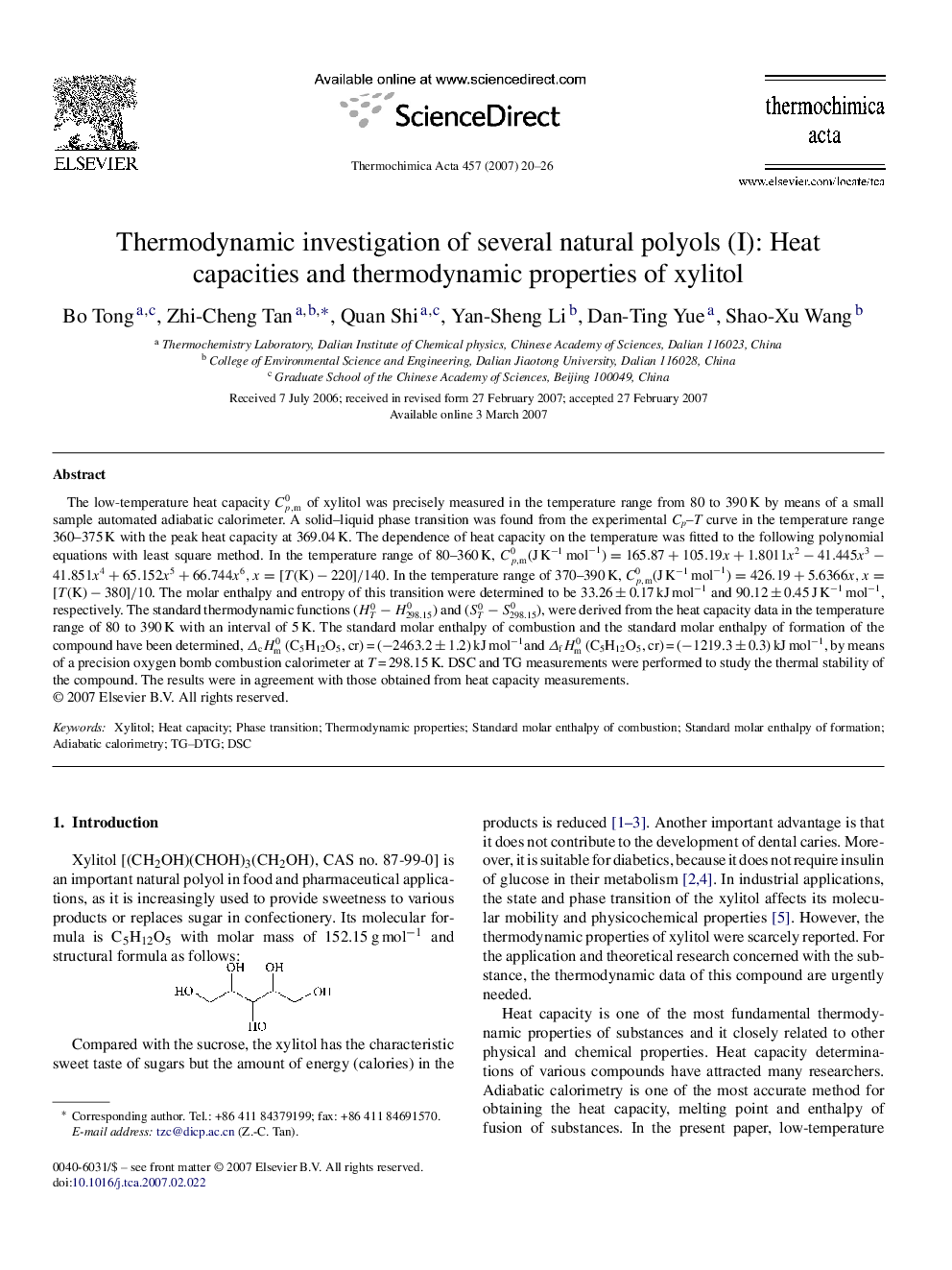| Article ID | Journal | Published Year | Pages | File Type |
|---|---|---|---|---|
| 675519 | Thermochimica Acta | 2007 | 7 Pages |
The low-temperature heat capacity Cp,m0 of xylitol was precisely measured in the temperature range from 80 to 390 K by means of a small sample automated adiabatic calorimeter. A solid–liquid phase transition was found from the experimental Cp–T curve in the temperature range 360–375 K with the peak heat capacity at 369.04 K. The dependence of heat capacity on the temperature was fitted to the following polynomial equations with least square method. In the temperature range of 80–360 K, Cp,m0(J K−1 mol−1)=165.87+105.19x+1.8011x2−41.445x3−41.851x4+65.152x5+66.744x6,x=[T(K)−220]/140. In the temperature range of 370–390 K, Cp,m0(J K−1 mol−1)=426.19+5.6366x,x=[T(K)−380]/10. The molar enthalpy and entropy of this transition were determined to be 33.26 ± 0.17 kJ mol−1 and 90.12 ± 0.45 J K−1 mol−1, respectively. The standard thermodynamic functions (HT0−H298.150) and (ST0−S298.150), were derived from the heat capacity data in the temperature range of 80 to 390 K with an interval of 5 K. The standard molar enthalpy of combustion and the standard molar enthalpy of formation of the compound have been determined, ΔcHm0 (C5H12O5, cr) = (−2463.2 ± 1.2) kJ mol−1and ΔfHm0 (C5H12O5, cr) = (−1219.3 ± 0.3) kJ mol−1, by means of a precision oxygen bomb combustion calorimeter at T = 298.15 K. DSC and TG measurements were performed to study the thermal stability of the compound. The results were in agreement with those obtained from heat capacity measurements.
